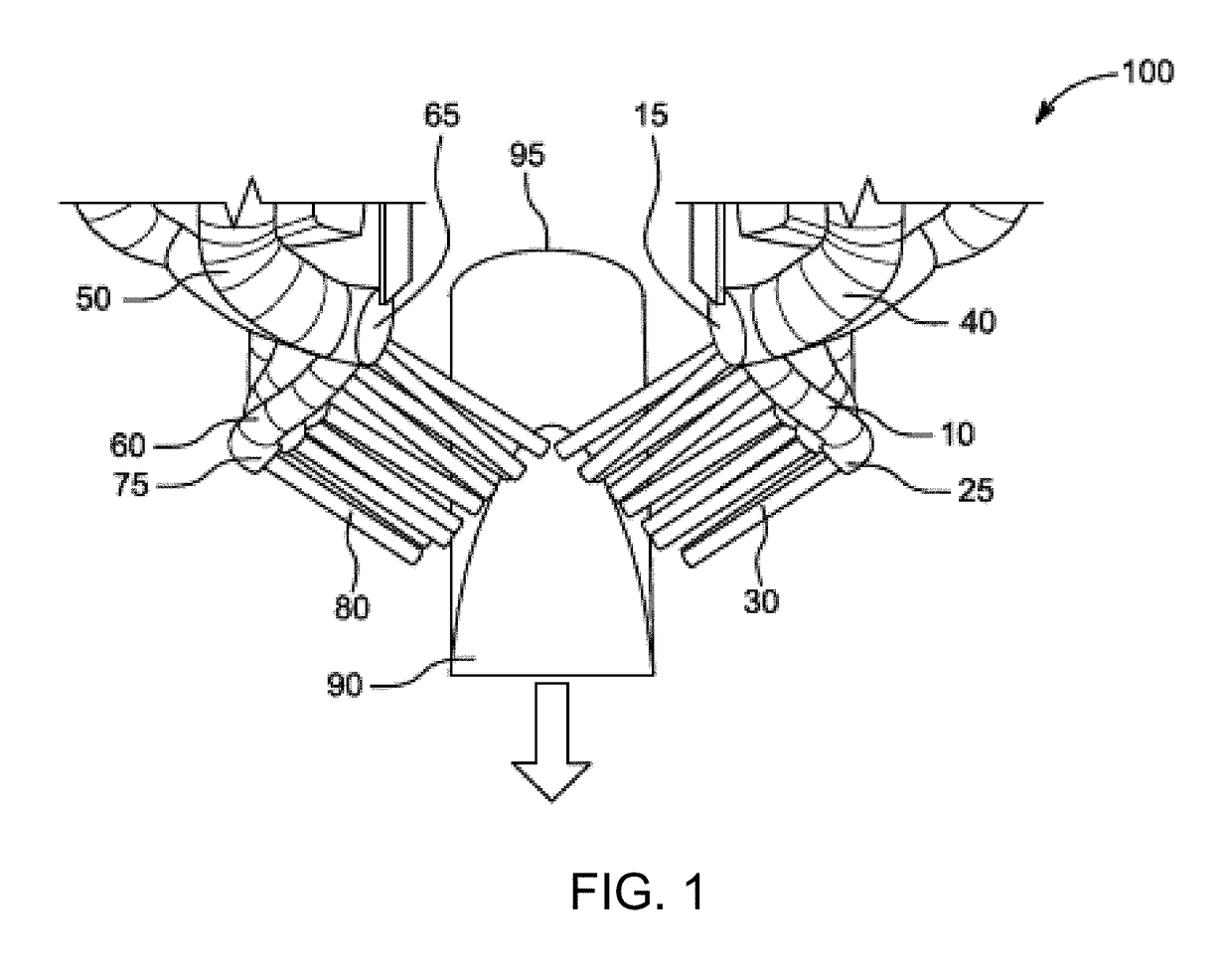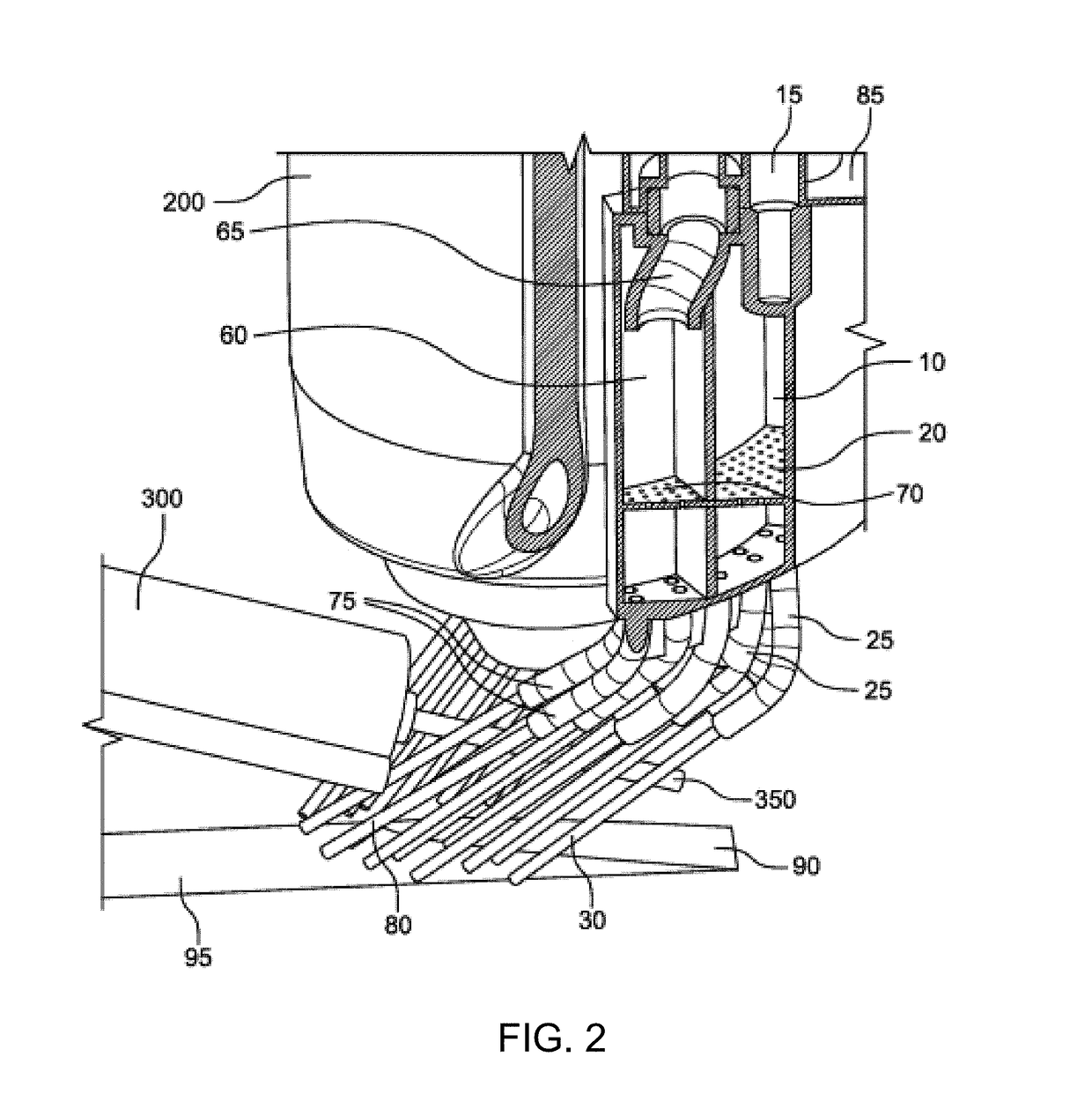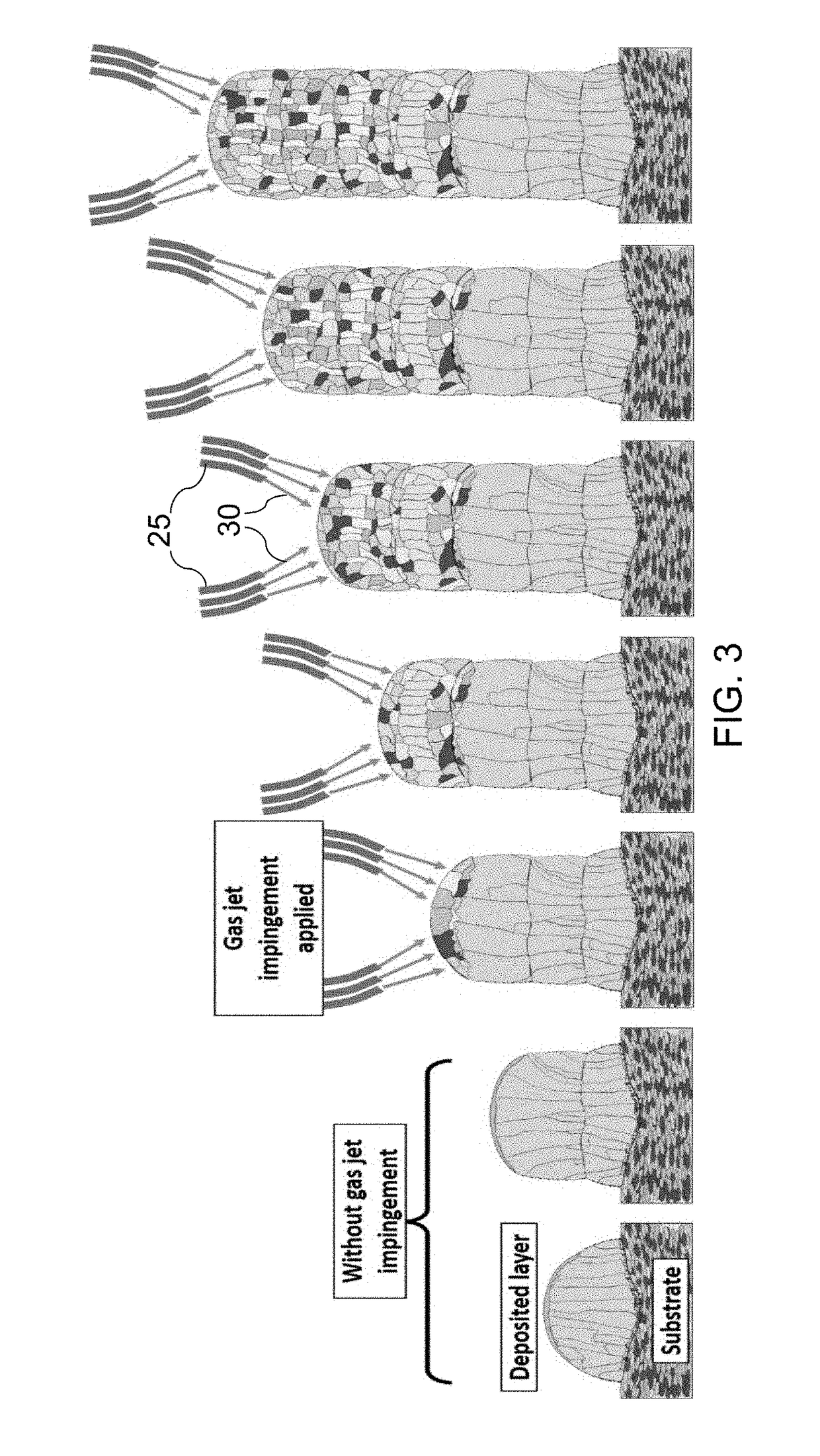Solidification refinement and general phase transformation control through application of in situ gas jet impingement in metal additive manufacturing
a technology of gas jet impingement and solid freeform fabrication, which is applied in the direction of manufacturing tools, soldering devices, auxilary welding devices, etc., can solve the problems of high material use of titanium alloy, large lead time in metal object fabrication, and typically reduced material quality, so as to reduce the average grain size, reduce the deposition rate or deposition productivity, and increase the deposition productivity
- Summary
- Abstract
- Description
- Claims
- Application Information
AI Technical Summary
Benefits of technology
Problems solved by technology
Method used
Image
Examples
example 1
[0147]A plasma and wire-based high deposition rate additive manufacturing process utilizing the Ti-6Al-4V alloy was used without (A) and with (B) the jet device provided herein jetting cooling gas during additive manufacturing. The cooling gas used was room temperature argon gas. The flow rate of the cooling gas was 20 L / min applied using the type of jet device illustrated in FIG. 1. Deposition rate was 5 kg / h and workpiece surface temperature / interpass temperature was 650° C. The deposition rate and the temperature were the same whether or not the jet device was used to applying cooling gas.
[0148]Micrographs of the results are shown in FIGS. 5A and 5B. FIG. 5A shows the structure of a metal object produced by typical additive manufacturing. The grain structure in the manufactured product in FIG. 5A is coarse and columnar structures are visible. FIG. 5B shows the beneficial results achieved when the jet device is used to apply a cooling gas to the melt pool during additive manufactu...
example 2
[0149]A plasma and wire based high deposition rate additive manufacturing process utilizing the Ti-6Al-4V alloy was used with unilateral application of cooling gas to one side of a melt pool in a single row Ti-6Al-4V string deposit using the jet device provided herein. The cooling gas used was room temperature argon gas. The flow rate of the cooling gas was 25 L / min applied using the type of jet device illustrated in FIG. 1. Deposition rate was 5 kg / h and deposition interpass temperature was 500° C. The argon cooling gas was applied to one half of the melt pool, and the other half was untreated. This was achieved by engaging the nozzles of the jet device on only one side of the melting tool.
[0150]The results are shown in FIG. 6. As can be seen in the figure, the untreated side (the right portion in the figure) exhibited coarse grain structure and columnar structures. The grain structure on the treated side the manufactured product in FIG. 6 (the left side) has metal grains that are ...
PUM
| Property | Measurement | Unit |
|---|---|---|
| Temperature | aaaaa | aaaaa |
| Cooling rate | aaaaa | aaaaa |
| Cooling rate | aaaaa | aaaaa |
Abstract
Description
Claims
Application Information
 Login to View More
Login to View More - R&D
- Intellectual Property
- Life Sciences
- Materials
- Tech Scout
- Unparalleled Data Quality
- Higher Quality Content
- 60% Fewer Hallucinations
Browse by: Latest US Patents, China's latest patents, Technical Efficacy Thesaurus, Application Domain, Technology Topic, Popular Technical Reports.
© 2025 PatSnap. All rights reserved.Legal|Privacy policy|Modern Slavery Act Transparency Statement|Sitemap|About US| Contact US: help@patsnap.com



